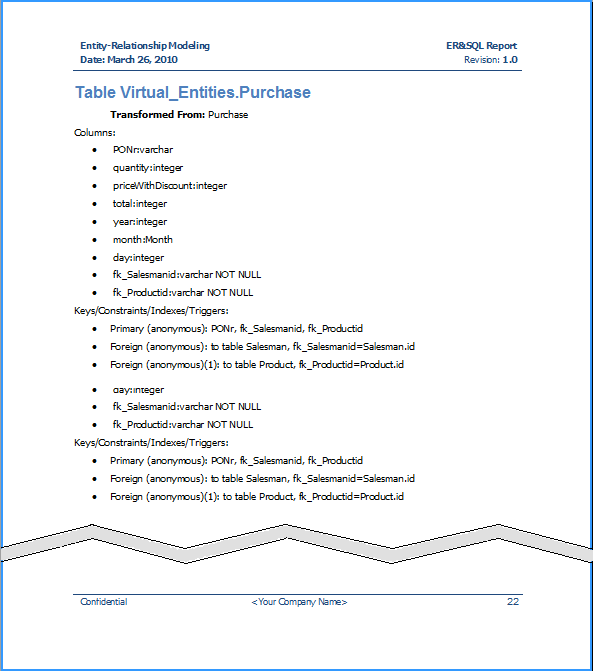MagicDraw provides a report template for generating reports of the data models. The report template is suitable for reporting both ER and SQL models. If your project contains both ER and SQL models, you can produce a unified report covering both models.
The report can be generated using the Report Wizard feature.
To generate a report
- On the Tools menu, click Report Wizard.
- In the Select Template area, select Data Modeling > Entity-Relationship and DDL Report and then click Next >.
- Click Next > again.
Note
In this step, you can edit report variables. To start editing variables, click the Variable button.
4. In the Select Element Scope area, define the scope for the report, using the buttons placed between the two lists, and then click Next >.
5. In the Output Options area, define the appropriate options.
6. Click Generate. Wait a moment while the report is generated (generation time depends on the selected scope).
The Report Wizard produces an .rtf file. This file contains sections for each reported model entity, its attributes, relationships with other entities (both simple relationships and generalization / specialization relationships), and keys. The SQL part of the file contains sections for each table (with its columns, constraints, indexes, and triggers), standalone sequence, global procedure or function, user-defined type (with its attributes and methods), and authorization identifier (users, groups, roles, and permissions).
The report has a standard beginning, including a cover page, table of contents, and a table of figures. You can customize sections (such as “Purpose”, “Scope”, “Overview”, and “Revision History”) by changing the predefined report variables. See the 3rd step of the report generation procedure, described above. The report also has an appendix containing all the diagrams in your model.
If the model contains both ER and SQL models and is linked by traceability references, the report will link (with active references) the appropriate report sections of entities and tables that are traceable in the model.

